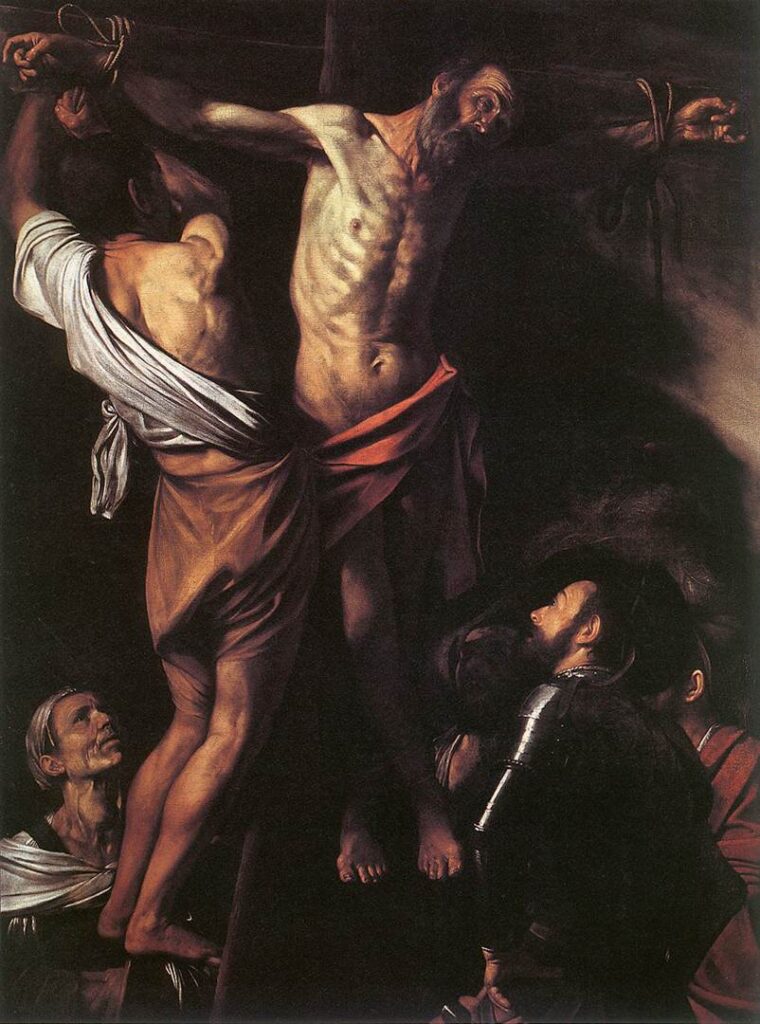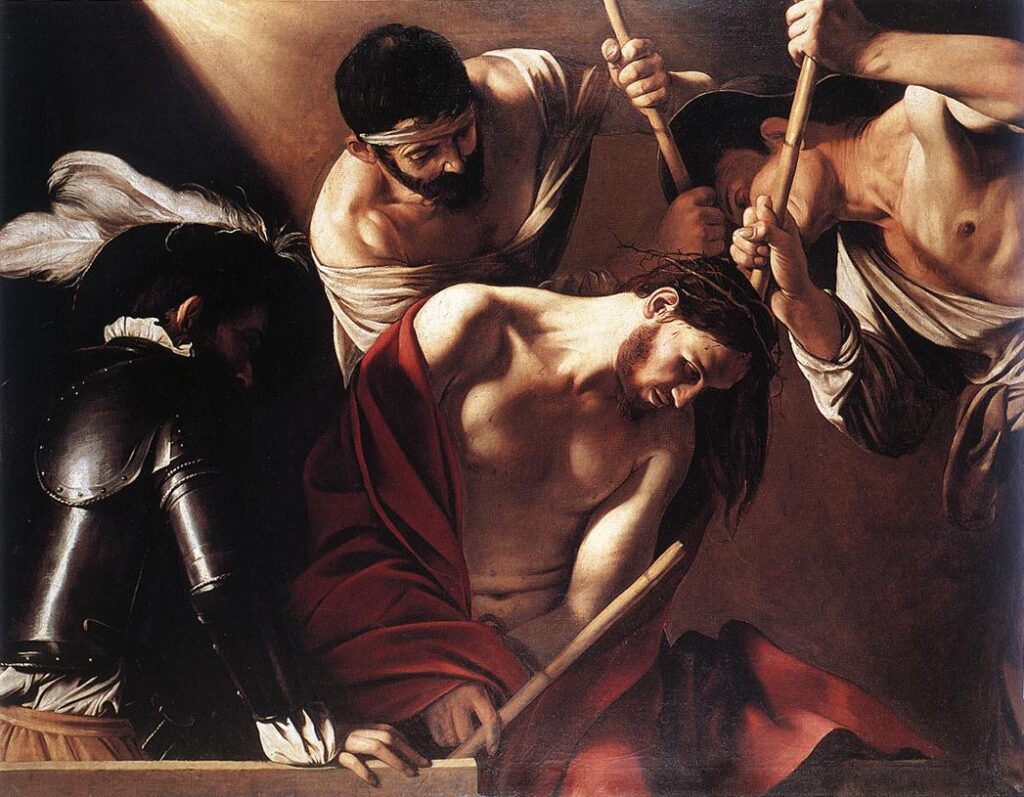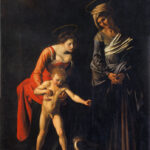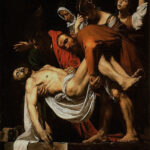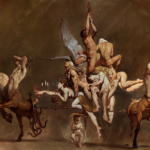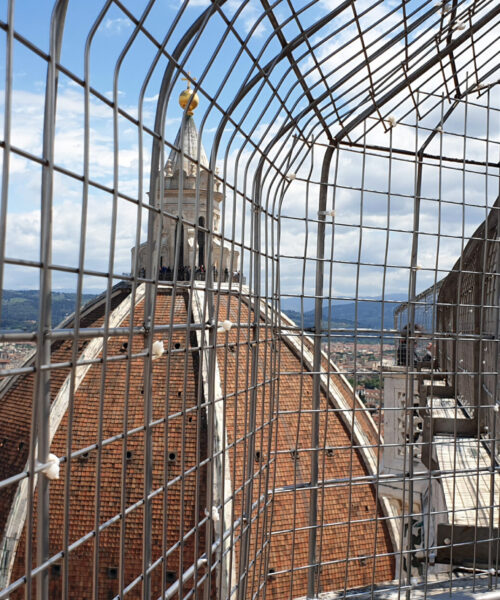Lesser-Known Masterpiece by Caravaggio
Michelangelo Merisi da Caravaggio, a name that resonates in the art world with the force of a lightning bolt, has left a legacy of masterpieces that continue to amaze and inspire. Among his works, some have received less recognition, but are no less extraordinary. The “Crucifixion of Saint Andrew” (1591-1610) is an example of these hidden gems. This wonderful painting, though lesser-known, rivals in style and execution with the Master’s more famous works.
Caravaggio is renowned for his innovative use of light, an element that has significantly influenced modern photography. The term “Caravaggio Light” refers to this style of glancing illumination, which creates dramatic contrasts and highlights details. In the “Crucifixion of Saint Andrew”, Caravaggio uses this technique to accentuate the tension and drama of the moment.
This painting was commissioned during Caravaggio’s first Neapolitan period, a time marked by the artist’s flight from Rome and his productive artistic activity in Naples. It is believed that the viceroy of Naples, Juan Alonso Pimentel de Herrera, Count of Benavente, commissioned the work to adorn the crypt of Saint Andrew in the Cathedral of Amalfi.
Curiously, the “Crucifixion of Saint Andrew” never reached its intended destination. Instead, it accompanied its patron, Juan Alonso Pimentel de Herrera, on his return to Spain, where it remained for nearly forty years. After various passages, the work was finally acquired by the Cleveland Museum in 1976, where it is admired by countless visitors today.
Artistic Analysis: The Crucifixion According to Caravaggio
The work, inspired by the Golden Legend, a text that encompasses stories of saints and martyrs, depicts Saint Andrew crucified. Caravaggio, while respecting the tradition of the Latin cross, plays with forms to evoke the X-shaped cross, a symbol of Saint Andrew. The body of the saint and that of the executioner create a composition that recalls this particular cross, demonstrating Caravaggio’s mastery in conveying symbolism through the arrangement of characters.
Interesting is the parallel with another Caravaggio’s work, “The Crowning with Thorns”. The figure in armor at the bottom right in the painting of the Crucifixion of Saint Andrew seems to echo a similar figure in the Crowning with Thorns, suggesting a thematic continuity in Caravaggio’s work.
Despite its lesser fame, the “Crucifixion of Saint Andrew” has inspired various copies, some of which are found in prestigious collections in Vienna, London, Toledo, and Dijon. These replicas underline the enduring influence and appreciation that the work has continued to receive over the centuries.
In conclusion, the “Crucifixion of Saint Andrew” represents a lesser-known, but no less fascinating, aspect of Caravaggio’s work. This masterpiece, though overshadowed by other more famous works, deserves to be rediscovered and appreciated for its artistic depth and emotional impact.

